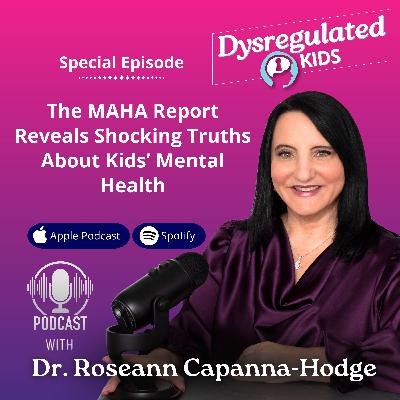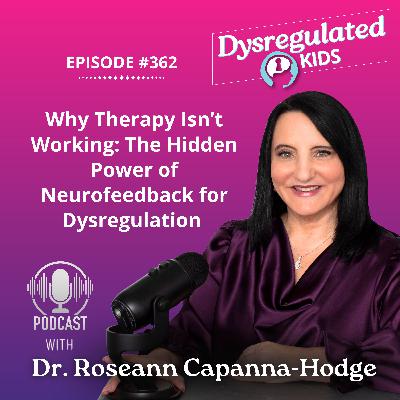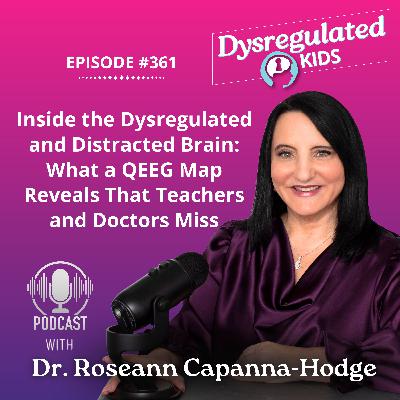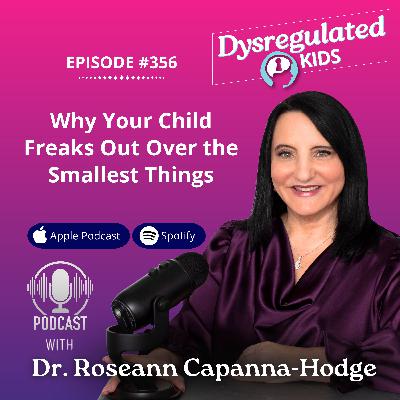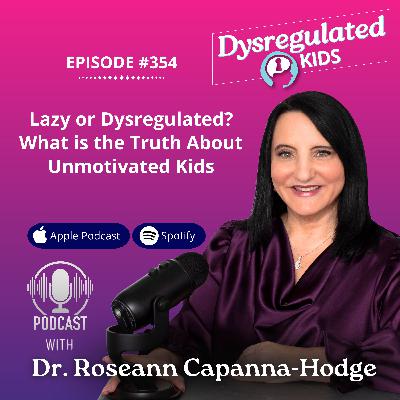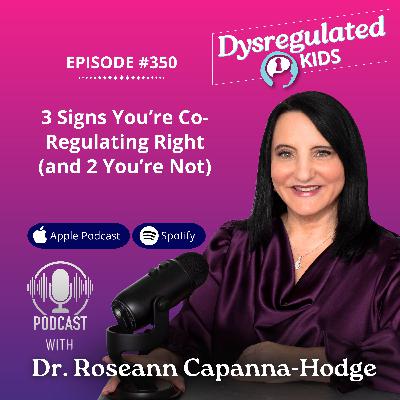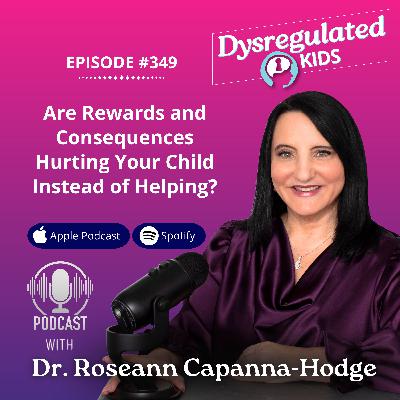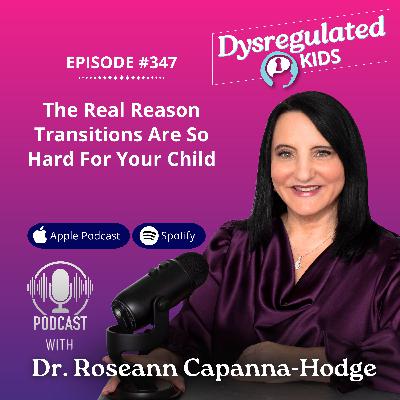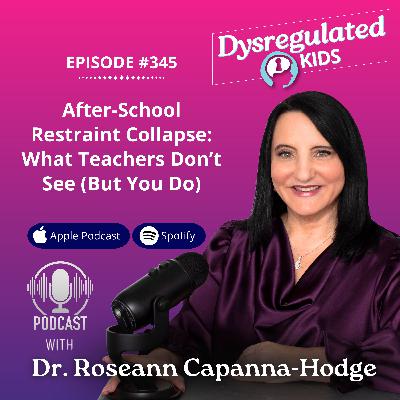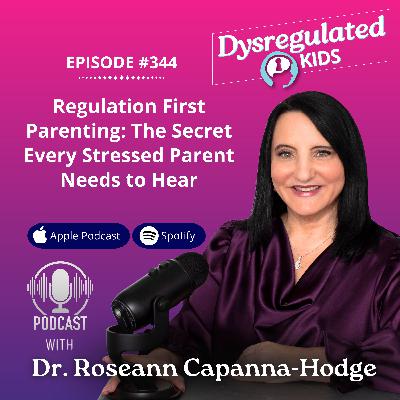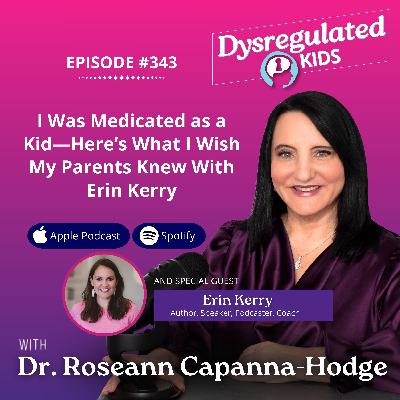Special Episode: The MAHA Report Reveals Shocking Truths About Kids’ Mental Health
Description
Parenting today feels overwhelming—and it’s not your imagination. The latest Make America Healthy Again (MAHA) Report reveals shocking truths about kids’ mental health and shows us just how deep this childhood chronic disease crisis runs.
Our children are carrying the weight of poor diet, chronic stress, environmental exposures, and endless screen time—and it’s affecting not just their moods but their overall health. As parents, it’s easy to wonder, “Is this just my child?” or “Am I doing something wrong?”
Let me reassure you—it’s not bad parenting, it’s a dysregulated brain. In this episode, I’ll walk you through what the report means for American children’s health and, most importantly, share practical steps you can take to calm the brain first, build resilience, and protect your child in today’s overstimulating world.
Why are so many American children struggling with mental health?
Parents are searching for answers because the numbers in the Make America Healthy Again (MAHA) Report are staggering:
- Teen depression has doubled in recent years.
- Suicide is now the second leading cause of death for teens, rising 62% since 2007.
- Loneliness is at epidemic levels—73% of young adults report feeling isolated.
- Neurodevelopmental disorders like ADHD and autism continue to rise at alarming rates.
These aren’t just statistics from a government assessment. They represent the nation’s health and, more importantly, our kids. The MAHA Commission—led by Human Services Secretary Robert F. Kennedy Jr.—noted that the potential drivers of this crisis include ultra processed foods, poor physical activity, environmental chemicals, and chronic stress.
This isn’t just a public health concern—it’s a matter of national security when so many American children of the same age are struggling with preventable mental and physical health conditions. The Human Services Department and National Institutes call this the biggest children’s health crisis in modern U.S. history.
Key Takeaways:
- It’s not bad parenting—it’s a dysregulated brain. Behavior is communication, and we need to calm the brain first.
- Environmental chemicals, ultraprocessed foods, and chronic stress are fueling this crisis in American children’s health.
- Over-reliance on medicine and medication isn’t fixing outcomes. The root causes—nutrition, stress, sleep, environmental exposures, and screen time—must be addressed.
What hidden drivers of kids’ health problems should parents know about?
The MAHA Report shines a light on what’s fueling the rise in dysregulation, ADHD, anxiety, and depression in kids today:
- Poor diet: 70% of children’s calories now come from ultra-processed foods, leaving their brains starved of the nutrients they need to focus, learn, and regulate emotions.
- Environmental exposures: Everyday chemicals—like pesticides and microplastics—interfere with hormones and raise risks for autism, ADHD, and other mental health struggles.
- Chronic stress & sleep loss: Exhausted kids can’t bounce back; lack of rest is draining their resilience.
- Technology overuse: Children average nine hours of non-school screen time daily, and social media alone doubles the risk for anxiety and depression.
- Over-medicalization: Prescriptions for ADHD, anxiety, and depression keep rising, yet long-term outcomes aren’t improving.
🗣️ “You don’t need to fix everything at once. Start small—like creating tech-free evenings or swapping one processed snack for a whole food option.” – Dr. Roseann
If you’re tired of walking on eggshells or feeling like nothing works…
Get the FREE Regulation Rescue Kit and finally learn what to say and do in the heat of the moment.
Become a Dysregulation Insider VIP at www.drroseann.com/newsletter and take the first step to a calmer home.
How can I tell if my child is struggling emotionally?
Most kids won’t come out and say, “I’m anxious” or “I’m depressed.” Instead, their struggles show up in behavior changes.
Warning Signs to Watch For:
- Sudden irritability or withdrawal
- Shifts in sleep, appetite, or friendships
- Refusing to go to school
- Trouble focusing that looks like ADHD but often comes from stress or overload
Remember: Behavior is communication. When you notice these shifts, pause before reacting. Connection—not interrogation—is what helps calm a dysregulated brain.
What practical steps can I take right now to help my child?
I believe resilience is the antidote to this crisis—and as parents, we play the most important role in protecting our children’s mental health.
Simple Ways I Calm the Brain First in My Own Home (and what I teach families to do):
- Practice daily breathing exercises together (like the 4-7-8 breath).
- Create co-regulation moments—when I stay calm, my child’s nervous system follows.
- Set technology boundaries—no phones in bedrooms and device curfews make a huge difference.
- Prioritize sleep and routines—because a tired brain simply can’t regulate.
- Fuel the body with real foods—nutrition is brain power.
You are not alone. Small, consistent changes at home can protect your child’s health for a lifetime.
The Make America Healthy Again (MAHA) Report may feel alarming, but I see it as a wake-up call. Our children are up against poor diet, chronic stress, and technology overload—but we do have the power to shift the trajectory. When we calm the brain first, we unlock resilience, connection, and hope.
When your child is struggling, time matters.
Don’t wait and wonder—use the Solution Matcher to get clear next steps, based on what’s actually going on with your child’s brain and behavior.
Take the quiz at www.drroseann.com/help
FAQs
What shocking truths did the MAHA Report reveal?
The MAHA Report uncovered what parents already feel—kids are struggling more than ever. Teen depression, suicide, loneliness, ADHD, and autism are rising fast. These aren’t isolated issues but connected to poor diet, chronic stress, technology overload, and environmental exposures. It’s not bad parenting—it’s a dysregulated brain.
How does screen time affect kids’ mental health?
Screens aren’t just entertainment—they impact the brain. Excessive use, especially social media, doubles depression and anxiety risk. When kids spend nine hours a day on devices, their nervous systems stay overstimulated. Setting tech boundaries creates breathing room, restores calm, and helps children build the resilience they desperately need.
Is my child’s behavior a sign of mental health issues?
Behavior tells the story kids can’t put into words. Instead of saying, “I’m anxious,” your child may show irritability, changes in sleep, or school refusal. These are signs of brain dysregulation, not bad behavior. Pause before reacting—connection, not correction, opens the door to healing and understanding.
Are medications helping kids get better?
Parents often hope medication will be the quick fix. While prescriptions for ADHD, anxiety, and depression have soared, outcomes aren’t improving. That’s because root causes—diet, stress, sleep, and overload—remain unaddressed. Calming the brain first through lifestyle shifts and co-regulation gives kids the foundation they need to truly thrive.

